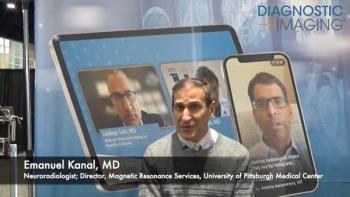
Transportable Analogic CT scanner makes debut with Philips label
Hitachi also signs on as OEM partnerAnalogic's long-awaited mobile CT scanner made its debut in thePhilips booth as Tomoscan SR 3200M at this month's RadiologicalSociety of North America conference. The scanner dovetails withPhilips' plans to
Hitachi also signs on as OEM partner
Analogic's long-awaited mobile CT scanner made its debut in thePhilips booth as Tomoscan SR 3200M at this month's RadiologicalSociety of North America conference. The scanner dovetails withPhilips' plans to develop its image-guided surgery program, butalso has features that make it a practical CT system for manyhospitals in the developing world.
The work-in-progress scanner was touted by Philips as a low-costsolution for CT performed during surgery and in the emergencyroom and intensive care unit. The complete system, including gantry,patient couch and operator console, weighs less than 1500 poundsand is built on wheels for easy mobility. The system will fitthrough a standard three-foot-wide doorway and requires less than200 sq. ft. for operation, according to the company.
The scanner operates on less than 1500 watts of common AC orDC power, thus eliminating the need for special wiring. Unlikeconventional CT systems, SR 3200M's patient table is fixed inplace while the continuous rotation gantry moves incrementally.This distinction increases the system's value in scanning traumapatients who may have suffered additional injury by being moved,according to Marc M. Lawrence, Philips' director of CT marketing.The system's compact design and modest power requirements makeit an attractive choice for field military applications, he said.
SR 3200M was designed by Analogic of Peabody, MA, which suppliesCT components to many OEMs. Philips announced at the RSNA meetingthat it will cooperate with Hitachi Medical Systems, its long-standingCT partner, in the clinical testing of the system.
Newsletter
Stay at the forefront of radiology with the Diagnostic Imaging newsletter, delivering the latest news, clinical insights, and imaging advancements for today’s radiologists.




























